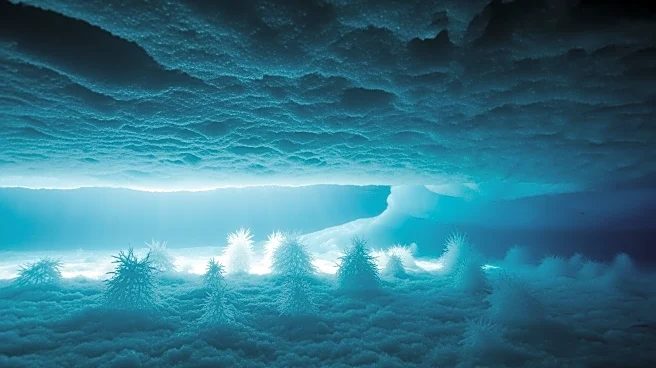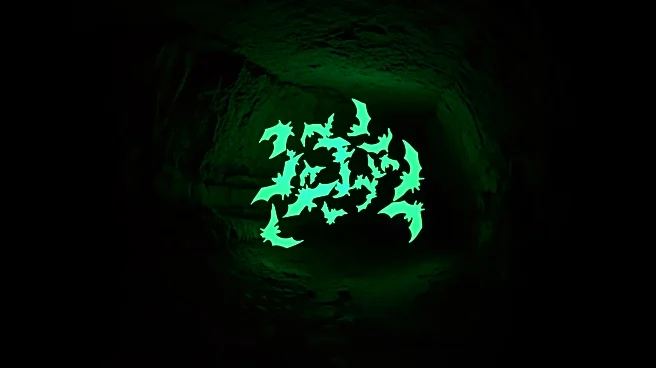What's Happening?
Researchers in Antarctica have discovered a significant collection of icefish nests beneath the recently calved A68 iceberg from the Larsen C Ice Shelf. The discovery was made during an expedition in the Weddell
Sea, initially aimed at locating Sir Ernest Shackleton's lost ship, the Endurance. The team, led by Dr. Michelle Taylor from Ocean Census, used an underwater robot named 'Lassie' to explore the seabed, revealing over 1,000 dimples in the sand, identified as nests of the yellowfin notie icefish. These nests, mostly inactive, were found to contain larvae, indicating active breeding grounds. The findings have been published in the journal Frontiers in Marine Science.
Why It's Important?
The discovery of these icefish nests is significant for understanding the unique ecosystems of the Antarctic seabed. Icefish are adapted to survive in sub-zero temperatures, and their nesting behavior plays a crucial role in the local biodiversity. The geometric arrangement of the nests suggests a strategy to protect against predators, with larger fish on the periphery defending the group. This habitat-building behavior supports a wider range of marine life, highlighting the ecological importance of these nesting sites. The findings underscore the need for the area to be designated as a Marine Protected Area to preserve its unique biodiversity.
What's Next?
The research team advocates for the designation of the area as a Marine Protected Area to safeguard the unique ecosystem. This could lead to increased conservation efforts and further studies to understand the ecological dynamics of the region. The discovery may prompt additional research into the behavior and adaptation of icefish and other species in extreme environments, potentially influencing conservation policies and strategies in Antarctica.












